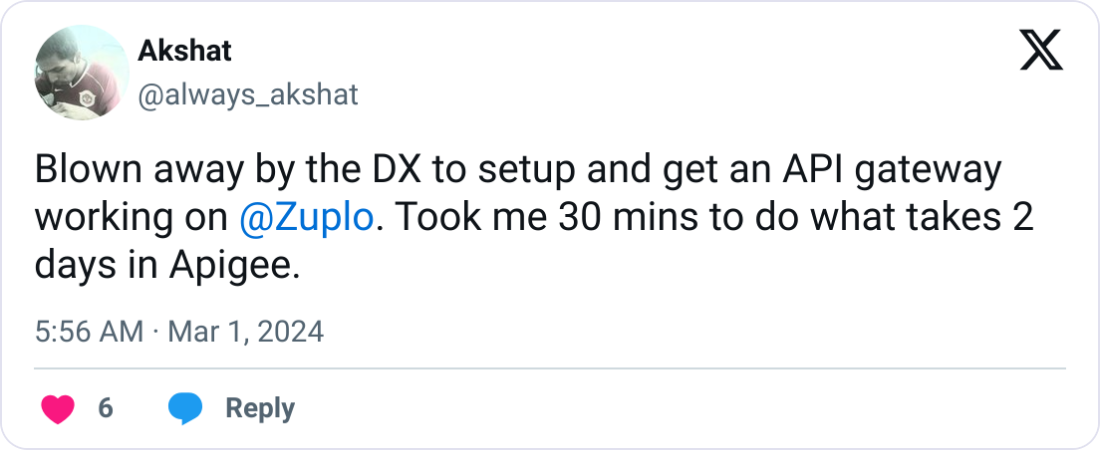APIs have become the prime targets for attackers seeking direct access to critical data and functionality. According to Synack, API attacks now represent the most frequent vector for enterprise data breaches—with 90% of web applications exposing more attack surface through APIs than user interfaces. This isn't just concerning—it represents a critical security imperative for modern organizations.
Unlike traditional web application testing that focuses on browser-side vulnerabilities, API penetration testing targets the core of your system: secure authentication practices, authorization controls, data exposure, and backend logic vulnerabilities. As direct conduits to sensitive data, API vulnerabilities frequently pose substantially higher risks than traditional web flaws, making thorough security testing non-negotiable in today's threat landscape. Let's dive into the key aspects of API penetration testing that can help secure your digital gateways.
- The API Threat Landscape: Understanding What You're Up Against
- Penetration Testing Methodologies: Choosing Your Approach
- Essential API Security Testing Tools: Equipping Your Arsenal
- Cracking the Code: How Pros Actually Test Your APIs
- Integrating Security Testing Throughout Development
- Advanced Testing Techniques: Beyond the Basics
- The Business Case for API Security Testing
- Securing Your API Future
The API Threat Landscape: Understanding What You're Up Against#

APIs don't just connect systems—they provide direct access points to your most valuable data. As the traditional security model of hardened perimeters becomes obsolete, the exposure of functionality through APIs creates fertile ground for attackers, making adherence to API security best practices more important than ever.
The OWASP API Security Top 10: Your Essential Survival Guide#
The OWASP API Security Top 10 outlines the most critical API security risks:
- Broken Object Level Authorization (BOLA): The most prevalent API vulnerability occurs when APIs fail to verify user permissions for accessing specific objects.
- Broken Authentication: Poor implementation of authentication systems can enable attackers to impersonate legitimate users or gain administrative access. Weak token management remains a common culprit in authentication breaches.
- Broken Object Property Level Authorization: This subtle vulnerability allows attackers to view or modify sensitive object properties they shouldn't access—effectively giving lobby visitors access to your vault.
- Unrestricted Resource Consumption: When APIs lack proper rate limiting, attackers can overwhelm systems with requests, causing denial of service.
- Broken Function Level Authorization: This occurs when API endpoints fail to verify user permissions for specific functions, potentially allowing regular users to access administrative features.
API-Specific Attack Surfaces: Different Types, Different Risks#
Understanding APIs is essential, as each API type presents unique security challenges requiring specialized testing:
- REST APIs: Their stateless nature requires authentication validation on every request, making them particularly vulnerable to parameter tampering and improper access controls.
- GraphQL APIs: Introspection features that help developers can become security liabilities when exposed in production, potentially revealing entire data structures to attackers.
- SOAP APIs: These older interfaces often face XML-based attacks, including XML external entity (XXE) injections that can lead to server-side request forgery.
- gRPC APIs: While more efficient than REST, improper implementation of protobuf messages can lead to deserialization attacks.

Over 10,000 developers trust Zuplo to secure, document, and monetize their APIs
Learn MoreModern Architecture, Modern Threats#
Contemporary architectures introduce new security challenges:
- Microservices: Each microservice represents a potential entry point, with many organizations heavily securing external-facing APIs while leaving internal communications vulnerable.
- Serverless Functions: Their ephemeral nature complicates tracking and securing, with permissions often set too broadly for convenience. Properly managing API access is critical to mitigate these risks.
- Shadow APIs: Undocumented APIs or forgotten APIs create massive blind spots in security posture—essentially leaving house keys under the doormat for attackers.
Penetration Testing Methodologies: Choosing Your Approach#
The effectiveness of your API security testing depends largely on your chosen methodology. Each approach offers distinct advantages for uncovering different types of vulnerabilities, including issues related to API authentication methods.
Black Box Testing: The Attacker's Perspective#
Black box testing simulates real-world attacks by providing testers minimal information—no documentation, source code, or architectural diagrams. Testers must discover endpoints through traffic analysis, client-side reverse engineering, path fuzzing, and response analysis.
This approach excels at revealing what actual attackers might find when targeting your API. However, without documentation, testers may miss critical endpoints or functionality, potentially overlooking vulnerabilities in complex business logic. For example, when testing an undocumented payment API, testers might identify client-visible endpoints but miss critical administrative interfaces.
Gray Box Testing: The Practical Middle Ground#
Gray box testing provides testers with partial information—documentation, authentication mechanisms, architecture diagrams, and test accounts with varying permission levels. This balanced approach enables systematic examination of endpoints while maintaining some external perspective.
This methodology particularly excels at identifying improper access controls in complex user role scenarios. A tester might discover that standard users can access administrative functions by manipulating request parameters—a vulnerability that black box testing might miss without contextual understanding.
White Box Testing: The Comprehensive Deep Dive#
White box testing grants testers complete access to source code, detailed architecture documentation, database schemas, authentication implementation details, and deployment configurations. This comprehensive approach enables thorough code review and analysis for identifying vulnerabilities like hardcoded credentials, insecure encryption, race conditions, and logic flaws.
Tools like SonarQube, Checkmarx, or Snyk can automate parts of this process by scanning for known vulnerability patterns. While white box testing may not reflect real-world attack scenarios (as attackers rarely access source code), it provides the most thorough assessment of security posture.
An integrated approach to end-to-end API testing often combines all three methodologies—beginning with white box testing during development, conducting gray box assessments before major releases, and periodically performing black box tests to simulate external attacks.
Essential API Security Testing Tools: Equipping Your Arsenal#

The effectiveness of your API security testing largely comes down to what’s in your toolset. Here's what you should be prioritizing:
API-Specific Testing Tools#
- RateMyOpenAPI: This tool scan your OpenAPI definition to identify security risks, like those found in the OWASP Top 10. It also identifies other issues like documentation mistakes or inconsistencies, making it a Swiss army knife for API governance and security.
- Yaak: This REST client (made by the creator of Insomnia) focuses on simplicity while delivering powerful features. Its clean interface and debugging tools help identify security issues in API responses that might otherwise go unnoticed.
- Burp Suite Professional: The comprehensive solution for API security testing, its proxy functionality enables intercepting, inspecting, and modifying traffic between clients and API endpoints. The scanner automatically detects common vulnerabilities, while repeater and intruder tools facilitate detailed manual testing.
Automation Frameworks#
- OWASP ZAP (Zed Attack Proxy): This robust tool provides API scanning capabilities that integrate directly into CI/CD pipelines, ensuring continuous security testing. ZAP excels at finding injection flaws and authentication problems that could compromise systems.
- Astra's Pentest API: Taking automation further, this tool covers over 9,300 test cases for API vulnerabilities. Its integration capabilities make it valuable for teams implementing continuous security testing.
GraphQL Testing Tools#
- InQL: This specialized tool helps identify security issues in GraphQL implementations by mapping schemas and identifying potential introspection vulnerabilities that could expose data structures.
- GraphQL Voyager: By visually representing GraphQL schema relationships, this tool helps identify potential attack surfaces that might remain invisible when only reviewing code.
Custom Script Development#
When off-the-shelf tools don’t quite cut it, Python libraries like Requests enable creating tailored tests for unique security requirements. This approach particularly helps test business logic vulnerabilities that automated scanners cannot comprehend.
Cracking the Code: How Pros Actually Test Your APIs#
Ever wonder how security experts really go about testing APIs? Spoiler alert — it’s not just random poking around hoping to find issues. Here's the step-by-step approach the pros use to uncover what's lurking in your API ecosystem.
Reconnaissance and Information Gathering#
The foundation of effective testing begins with thorough reconnaissance. Just like mapping out a crime scene, good pentesters start by discovering what's actually out there:
- API Discovery: Use tools like Kiterunner to identify both documented and undocumented endpoints by brute-forcing common API paths and analyzing responses. Organizations frequently discover forgotten or shadow APIs during this phase—endpoints that would otherwise remain vulnerable.
- Documentation Analysis: Swagger/OpenAPI files serve as treasure maps, revealing expected behaviors, endpoints, and parameters that guide testing strategy. The most interesting vulnerabilities often hide in mundane details.
- Traffic Interception: Setting up proxies like Burp Suite or OWASP ZAP enables observing API communications in real time, establishing behavioral baselines that help identify anomalies during testing.
Vulnerability Assessment#
Once you've mapped the landscape, it's time to look for cracks in the foundation. This is where you get your hands dirty examining each component for potential flaws:
- Analyzing Authentication Mechanisms: Test for weak token implementation,
improper validation, and session management flaws. When examining JWT
implementations, check for issues like weak signing algorithms
(
none/HS256), token manipulation, and missing validation. - Testing Authorization Controls: Verify that access controls function properly across all endpoints and resources, testing both horizontal privilege escalation (accessing other users' data) and vertical privilege escalation (accessing administrative functions).
- Examining Input Validation: Probe API inputs with unexpected values, malformed data, and injection vectors. APIs often validate obvious inputs but miss edge cases where vulnerabilities lurk.
- Evaluating Data Exposure: Check whether APIs return excessive information in responses. Many APIs return complete user objects (including sensitive data) when only minimal information is required.
Exploitation Techniques#
Finding potential issues is only half the battle. Now comes the fun part – seeing if you can actually break in:
- Broken Object Level Authorization (BOLA/IDOR): Replace IDs in requests to access unauthorized resources—attempting to access User 2's data while authenticated as User 1. This basic attack frequently succeeds even in mature APIs.
- Authentication Bypasses: Manipulate tokens, session states, or input parameters to bypass authentication. Try removing tokens, using expired tokens, or modifying token contents to test authentication robustness.
- Mass Assignment: Send additional parameters in requests to modify
protected fields. For example, adding
isAdmin=trueto a profile update request might grant administrative privileges if the API doesn't properly filter input parameters. - Server-Side Request Forgery (SSRF): Manipulate APIs that fetch remote resources to access internal systems, potentially providing access to entire internal networks.
Post-Exploitation and Reporting#
Finding security holes is pointless if nobody fixes them. The final stage transforms technical discoveries into business actions that actually make a difference:
- Impact Assessment: Explain vulnerability implications in business terms—a BOLA vulnerability represents a potential data breach, not merely a technical issue.
- Remediation Planning: Provide specific, technical recommendations for each vulnerability rather than general advice.
- Prioritization Framework: Classify vulnerabilities by severity to help teams address critical issues first. Not all vulnerabilities pose equal risk—an authentication bypass requires immediate attention before minor information disclosure.
- Effective penetration test reports include both technical details and clear explanations of business risks with concrete remediation steps, ensuring security findings translate into actual improvements.
Integrating Security Testing Throughout Development#
API security isn't an afterthought—it must be integrated throughout development. When security becomes a late addition, vulnerabilities multiply and remediation costs escalate.
Shift-Left Security: Earlier Is Better#
Moving security testing earlier saves time, money, and reputations through:
- Developer-Friendly Security Tools: Solutions like RateMyOpenAPI make security accessible by auditing API definitions at the code level, helping developers understand and fix issues before production deployment.
- Security Unit Tests: Create tests verifying authentication, authorization, and input validation alongside functional tests:
// Example: Contract testing with security assertions
test("API should reject invalid tokens", async () => {
const response = await api.get("/protected-resource", {
headers: { Authorization: "Invalid-Token" },
});
expect(response.status).toBe(401);
});- API Contract Validation: Define security requirements in API specifications and validate implementations against these contracts regularly to create a consistent security blueprint.
CI/CD Security Integration: Automate Everything#
Make security testing automatic with every build:
- Automated Scanning Configurations: Configure tools like OWASP ZAP to scan APIs during build processes, identifying vulnerabilities without manual intervention.
- Break-the-Build Security Policies: Establish security thresholds that prevent insecure code from progressing through the pipeline. While this might cause temporary friction, it prevents vulnerable APIs from reaching production.
Here's a simple GitHub Actions workflow incorporating API security testing:
name: API Security Scan
on: [push, pull_request]
jobs:
security-scan:
runs-on: ubuntu-latest
steps:
- uses: actions/checkout@v2
- name: OWASP ZAP API Scan
uses: zaproxy/action-api-scan@v0.1.0
with:
target: "https://api-staging.example.com"
fail_action: true
cmd_options: "-r api-scan-report.html"Continuous Monitoring: Never Stop Watching#
Security vigilance extends beyond deployment:
- Runtime API Security Monitoring: Deploy tools analyzing traffic patterns to detect suspicious behavior or policy violations in real time.
- Anomaly Detection: Implement systems establishing baselines for normal API usage and alerting when deviations occur, identifying potential threats before they materialize.
- SIEM Integration: Connect API monitoring with Security Information and Event Management systems to correlate API events with other security telemetry, identifying sophisticated attacks targeting multiple systems.
Advanced Testing Techniques: Beyond the Basics#
Moving beyond standard vulnerability scanning requires specialized techniques that identify sophisticated vulnerabilities eluding basic testing.
Fuzzing API Endpoints: Testing the Unexpected#
Strategic fuzzing reveals how APIs handle unexpected inputs, potentially uncovering memory leaks, crashes, and serious issues missed by standard testing:
import requests
import random
import string
def generate_payload(length):
chars = string.ascii_letters + string.digits + string.punctuation
return ''.join(random.choice(chars) for _ in range(length))
def fuzz_api_parameter(endpoint, param_name, iterations=100):
results = []
for i in range(iterations):
# Generate payloads of varying lengths
payload_length = random.randint(1, 10000)
payload = generate_payload(payload_length)
# Test the endpoint with the payload
params = {param_name: payload}
try:
response = requests.post(endpoint, params=params, timeout=5)
if response.status_code >= 500:
results.append({
'payload': payload[:50] + '...' if len(payload) > 50 else payload,
'status_code': response.status_code,
'response': response.text[:100]
})
except requests.exceptions.RequestException as e:
results.append({
'payload': payload[:50] + '...' if len(payload) > 50 else payload,
'error': str(e)
})
return results
This script systematically generates malformed inputs and logs unexpected responses, helping identify potential vulnerabilities that could lead to system compromise.
Business Logic Exploitation: Finding the Money Vulnerabilities#
Business logic flaws don't trigger traditional security alerts because they exploit legitimate functionality in unexpected ways:
- Parameter Manipulation: Testing e-commerce APIs by submitting negative quantities or zero prices can reveal validation failures that might allow obtaining free products.
- Sequential Request Exploitation: Many operations involve multiple steps (create account → verify email → access resources). Attempting to skip steps can reveal critical security check bypasses.
- Insecure Direct Object References: Testing whether changing ID parameters enables accessing other users' data reveals proper (or improper) access controls.
Race Condition Exploitation: Timing Attacks#
Race conditions represent subtle vulnerabilities arising from improper request synchronization:
import threading
import requests
def make_request(url, payload, results, index):
response = requests.post(url, json=payload)
results[index] = response.json()
def test_race_condition(url, payload, num_threads=10):
threads = []
results = [None] * num_threads
# Create and start threads
for i in range(num_threads):
thread = threading.Thread(target=make_request, args=(url, payload, results, i))
threads.append(thread)
# Start all threads nearly simultaneously
for thread in threads:
thread.start()
# Wait for all threads to complete
for thread in threads:
thread.join()
return results
This script launches multiple identical requests simultaneously, testing whether APIs handle concurrent operations correctly. Race conditions have allowed users to withdraw excess funds, redeem coupons multiple times, or bypass rate limiting.
Vulnerability Chaining: Creating Critical Impact#
The most devastating attacks rarely rely on single vulnerabilities, instead chaining multiple issues:
- Begin with information disclosure vulnerabilities to gather data about users, roles, or endpoints
- Use that information to exploit broken access controls or authentication mechanisms
- Leverage the escalated access to compromise additional systems
For example, attackers have used information leakage to discover admin user IDs, combined with weak password reset functions, to gain full administrative access.
The Business Case for API Security Testing#
While technical security details matter, business leaders require clear financial justification for security investments.
ROI Calculation: The Math of Prevention#
Calculate security testing return on investment using:
ROI = (Cost of Potential Breach - Cost of Security Testing) / Cost of Security Testing
This formula demonstrates potential savings from preventing even a single security breach. When considering variables like direct remediation costs, regulatory fines, legal expenses, customer compensation, revenue loss, and reputation damage, the financial case becomes compelling.
Cost-Benefit Analysis: Numbers That Matter#
The financial comparison is stark:
Reactive Breach Response:
- Average data breach cost: $4.5 million (according to IBM's 2023 Cost of a Data Breach Report)
- Regulatory fines: Up to $20+ million for GDPR violations
- Customer churn: 3–7% increase following publicized breaches
Proactive Testing Approach:
- Comprehensive API penetration testing: $15,000–$50,000 annually
- Remediation of identified issues: $10,000–$30,000
- Ongoing monitoring and testing: $25,000–$75,000 annually
Even at the high end, proactive security costs represent a fraction of a single breach's expense. The question isn't whether organizations can afford proper API testing—it's whether they can afford to skip it.
Securing Your API Future#
API security isn't just about preventing breaches—it's about building trust with your users, partners, and stakeholders. As APIs continue to serve as the backbone of modern digital experiences, their security becomes inseparable from your organization's reputation and success. Implementing comprehensive penetration testing practices creates a foundation of security that supports innovation rather than hindering it.
Ready to transform your API security posture? Zuplo's developer-focused platform provides the tools you need to integrate security throughout your API lifecycle. From design-time validation to runtime protection, our solutions help you identify and mitigate vulnerabilities before they become problems. Sign up for a free Zuplo account today and take the first step toward truly secure APIs.